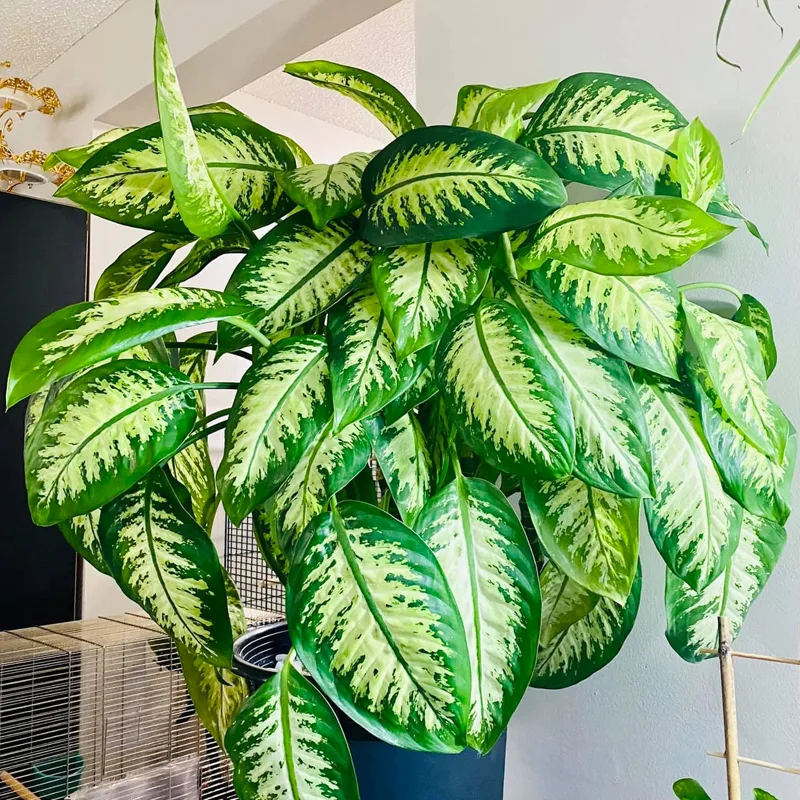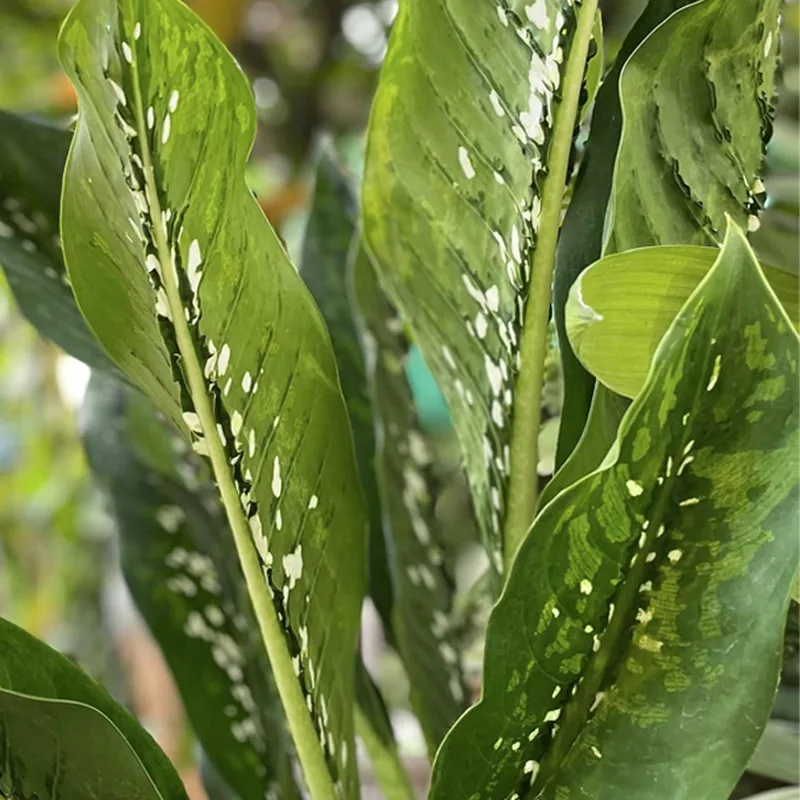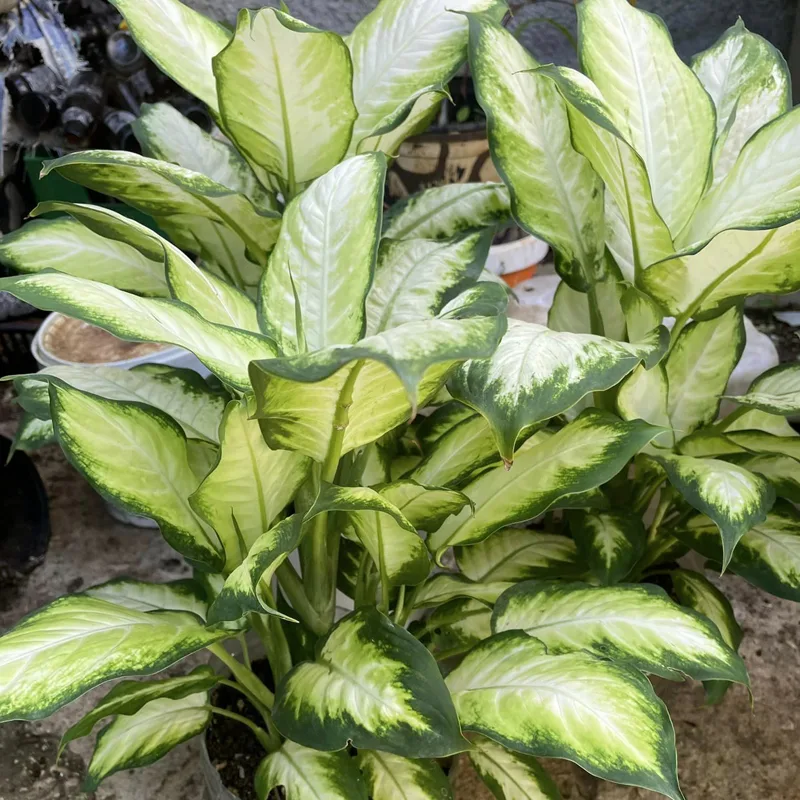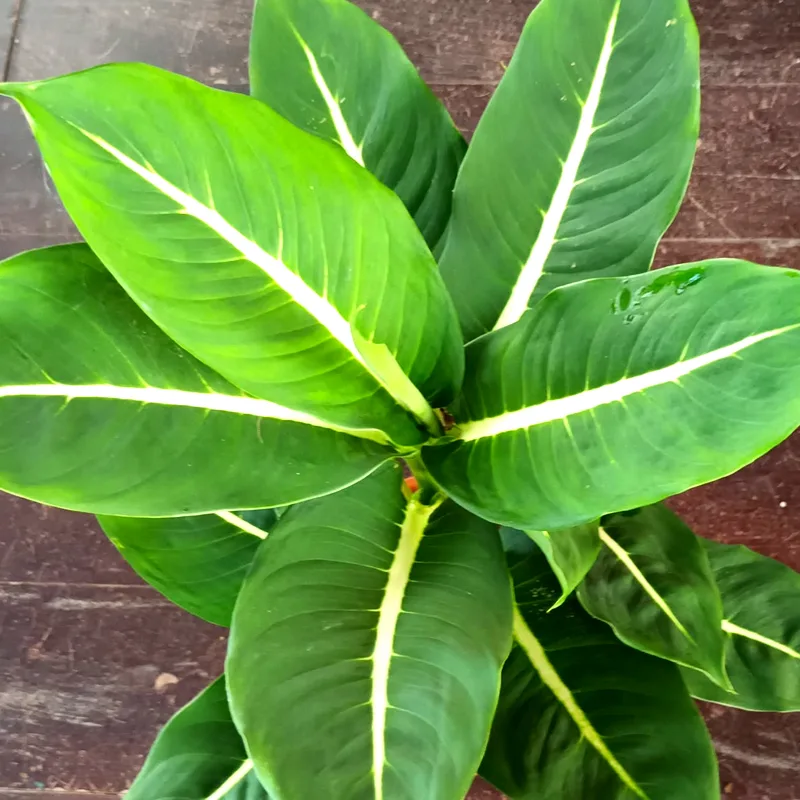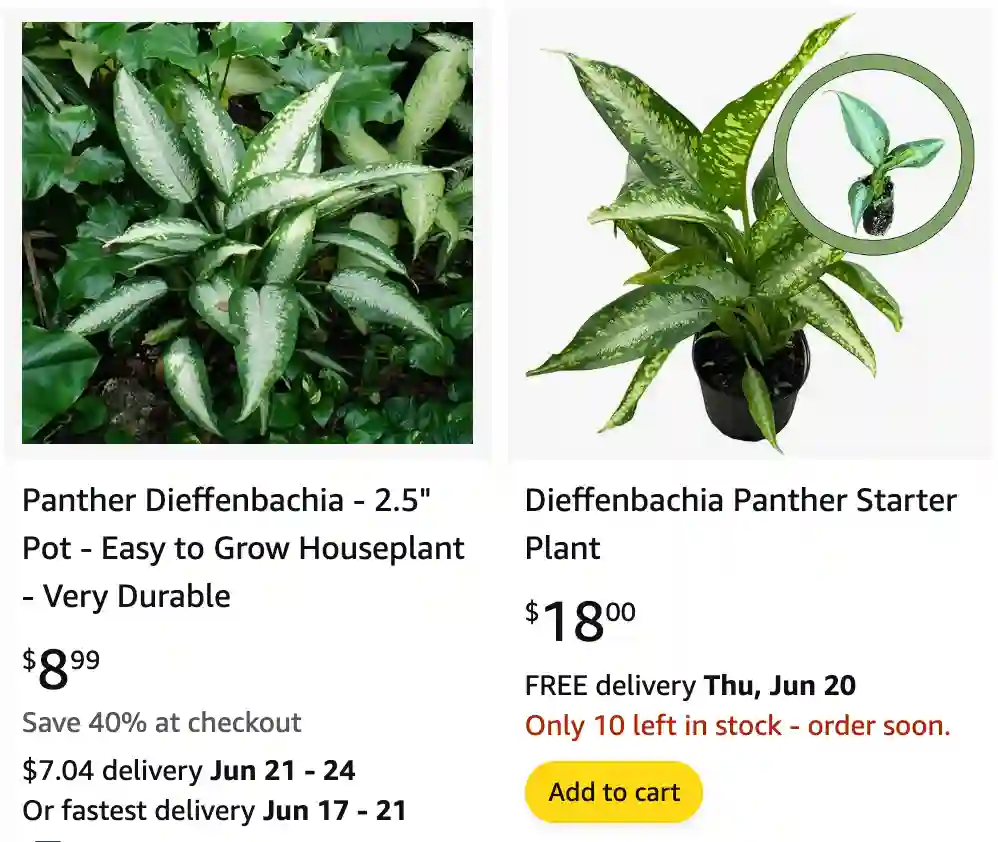
Dieffenbachia Panther: Frequently Asked Questions
Hey there, Ferb Vu here! Today, we’re diving into the world of the Dieffenbachia Panther, a stunning tropical plant known for its captivating foliage. Whether you’re a seasoned plant parent or a curious beginner, this FAQ will equip you with everything you need to know about caring for this beauty.
60 Species in Genus Dieffenbachia
What is a Dieffenbachia Panther?
The Dieffenbachia Panther, also known as the Panther Lily or Camille, is a captivating houseplant hailing from the lush rainforests of Central and South America. It boasts large, glossy leaves with a mesmerizing pattern. Imagine a deep green base splashed with creamy white or yellow speckles, framed by a darker green border.
These beauties can reach up to 3 feet tall, adding a touch of the tropics to any indoor space.
Is the Dieffenbachia Panther Easy to Care For?
Absolutely! The Dieffenbachia Panther is a dream come true for plant enthusiasts of all levels. Here’s what makes it so beginner-friendly:
- Low light tolerance: Unlike many finicky houseplants, the Panther thrives in medium to bright, indirect sunlight. It can even tolerate lower light conditions, making it perfect for rooms that don’t get a lot of natural light.
- Easy watering: No need to become a watering pro! Allow the top inch of soil to dry out before giving your Panther a good drink. Remember, it prefers slightly moist soil, not soggy roots.
- Minimal maintenance: This low-maintenance plant doesn’t require any special fertilizing or pruning routines. Just provide it with the right environment and basic care, and it’ll reward you with lush, vibrant foliage.
Dieffenbachia Panther vs. Dumb Cane: What’s the Difference?
The Dieffenbachia Panther belongs to the Dieffenbachia genus, commonly known as Dumb Canes. So, they’re essentially cousins! Here’s a quick breakdown of the similarities and differences:
- Similarities: Both the Panther and other Dumb Canes share the same love for medium to bright, indirect light and prefer well-draining soil. They’re also known for their air-purifying properties, helping to improve indoor air quality.
- Differences: The main difference lies in their stunning foliage. The Panther boasts a unique, speckled pattern that sets it apart from other Dumb Canes, which typically have simpler variegations of cream, white, or yellow on green leaves.
Dieffenbachia Panther vs. Aglaonema: Picking Your Perfect Plant
Both the Dieffenbachia Panther and the Aglaonema (Chinese Evergreen) are popular choices for indoor spaces. Here’s a quick comparison to help you decide which one suits you best:
- Light: The Panther thrives in medium to bright, indirect light, while the Aglaonema can tolerate even lower light conditions.
- Growth rate: The Panther is a faster grower than the Aglaonema.
- Toxicity: Important note: Both plants are toxic if ingested, so keep them out of reach of children and pets.
Ultimately, the choice depends on your preference. If you desire a faster-growing plant with striking foliage and can offer brighter indirect light, the Dieffenbachia Panther is a great pick. If low-light tolerance is a priority, the Aglaonema might be a better fit.
How Do I Care for My Dieffenbachia Panther?
Now that you’re smitten with the Dieffenbachia Panther, let’s get down to the care specifics:
- Light: As mentioned earlier, provide your Panther with medium to bright, indirect sunlight. Avoid harsh, direct sunlight that can scorch the leaves.
- Watering: Water thoroughly when the top inch of soil dries out. Avoid overwatering, as this can lead to root rot.
- Soil: Use a well-draining potting mix that allows excess water to escape freely. A mixture of potting soil, perlite, and orchid bark can work wonders.
- Fertilizer: During the growing season (spring and summer), you can give your Panther a monthly dose of diluted liquid fertilizer. However, it’s not essential for healthy growth.
- Humidity: While the Dieffenbachia Panther isn’t overly fussy about humidity levels, it appreciates occasional misting, especially during dry winter months. Grouping your Panther with other humidity-loving plants can also create a more humid microclimate.
Tips for a Thriving Dieffenbachia Panther
Here are some bonus tips to keep your Dieffenbachia Panther happy and healthy:
- Repotting: As your Panther grows, it might need repotting every 1-2 years. Choose a pot that’s just slightly larger than the current one to prevent overwatering.
- Cleaning the leaves: Dust can accumulate on your Panther’s beautiful leaves, dulling their shine. Wipe them down gently with a damp cloth to restore their vibrancy.
- Propagation: Want to share the love? The Dieffenbachia Panther can be propagated through stem cuttings. Take a healthy stem section with a few nodes, dip it in rooting hormone (optional), and plant it in a pot with moist, well-draining soil.
- Toxicity: Remember, the Dieffenbachia Panther, like all Dumb Canes, is toxic if ingested. The sap can also irritate skin and eyes. Keep it out of reach of curious children and pets. If you suspect ingestion, seek immediate medical attention.
Common Problems with Dieffenbachia Panther
Even the most low-maintenance plants can encounter occasional issues. Here are some common problems with the Dieffenbachia Panther and their solutions:
- Brown leaves: This can be caused by underwatering, overwatering, or lack of humidity. Check your watering habits and increase humidity if necessary.
- Drooping leaves: This usually indicates underwatering. Give your Panther a good drink and adjust your watering schedule.
- Yellowing leaves: Similar to brown leaves, yellowing can be due to underwatering, overwatering, or insufficient light. Assess your care routine and adjust accordingly.
- Pests: While not as common, mealybugs and spider mites can occasionally bother your Panther. Treat them with insecticidal soap or neem oil solution.
By following these simple tips and being observant of your plant’s needs, you can troubleshoot any issues that may arise and keep your Dieffenbachia Panther thriving for years to come.
If i die, water my plants!
